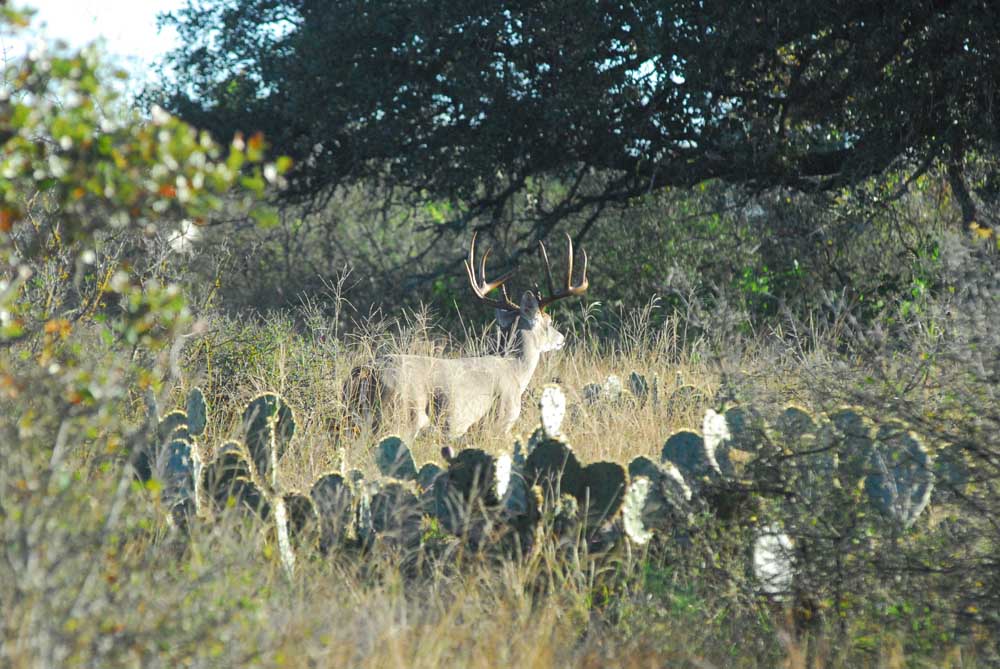Taking a big buck is a good thing when thinking it through
Published 8:17 pm Friday, November 9, 2018

- The word "trophy" is a buzzword that those who do not hunt like to throw out. What is often ignored is everything that goes into producing trophies, and comes out of taking one. (Steve Knight/Staff)
CAMP VERDE — I killed a buck the other day. It was a trophy kill, if you want to call it that. The 12-point, 140-inch class buck was definitely a trophy to me and destined for a special spot at the house.
On a ranch that has produced five bucks over 170 inches the last two years, it was considered a management buck. It got that designation because entering old age, that is as good as the buck is ever going to be and the ranch has a bunch of better bucks. I am good with that name also.
Trending
There are those in the world who would blow a fuse with either name. I know because a few weeks ago I got into a discussion with someone on social media that would have loved to have been able to reach through the screen and grab me by the throat for having killed the deer, period. How do I know? Well, I left the conversation when the person, someone I have never met, said it was time to begin culling the herd starting with me.
It really was not a discussion. A discussion is where a person offers their point of view and the other responds back. At least it used to be. In this case, he had no facts for why he did not like me hunting, just an irrational bias that hunting is bad. In his mind, I was killing the best bucks and keeping them from siring others. Despite having learned years ago that you cannot argue with a person who does not want to learn, I tried to explain the facts of conservation to him.
Had he been willing to listen, he might have learned that the 6 ½-year-old buck was no longer one of the best breeders in the herd. That designation goes to the younger bucks, the 3½, 4½ and 5½s. The old guys still get around, but like an older human just are not as fast on their feet as they once were.
Hunters are not stupid. When letting deer get old enough to become trophies, we want the best genetics in the herd. That is accomplished by letting those with potential do the breeding until they are past their breeding prime and have reached their trophy prime.
Although I was a guest on this hunt, I would have explained how hunters’ lease dollars, money spent in towns, through the purchase of licenses and gear gives the deer a value. That makes the deer important to the landowner when it comes to maintaining habitat. These are not givens just for deer, but for wildlife worldwide.
I would explain that while Texas hunters usually shoot about 600,000 deer a year, deer numbers are growing and the herd is now estimated at 4.6 million. Quality is also improving as hunters learn the importance of taking bucks and does.
Trending
I would have also tried to explain that while a cowman can control numbers by taking cattle to market, you cannot do that with deer. The only control is harvest.
And although I would never have convinced him differently, I find it better to take deer hunting than to watch it starve to death in old age. We know it happens because aging a deer is done by judging tooth wear. The older the deer, the fewer teeth and the less ability it has to feed itself enough to survive even a Texas winter.
I wish I could say I had been patterning this buck since it was 2 or something like they do on the outdoor channels. Truth is my friend Mike Leggett had spotted it a week earlier. Leggett saw him several times always making a short walk from the cedars to a feeder shortly before it went off.
We were in the blind the next Friday, but the deer did not make its scheduled appearance. Several other really nice mature bucks did, so we sat and watched them for a while.
Leggett was about to call it for the evening when the buck stepped out. With about three inches broken off its main beam, he was easily identifiable. I shot, he turned and ran nose first into a nearby agarita bush.
I kept the cape and antlers, fulfilling the definition of what some consider trophy hunting. But the story does not end there, and that is really where the fallacy of trophy hunting exists.
I took my deer to Carnes Processing in Whitehouse and actually left it and three others for the Hunters for the Hungry program. My buck field dressed 150 pounds. So did another one I brought back. Combined with another doe I took, the three should provide at least 400 individual servings of protein for needy families.
To me, that is where the trophy argument comes to an end. My buck had spread its genetics, it was beginning the downhill side of life, it was taken out of an overpopulated herd so other deer could live, and it was used to feed people and finally will remain with me forever.



